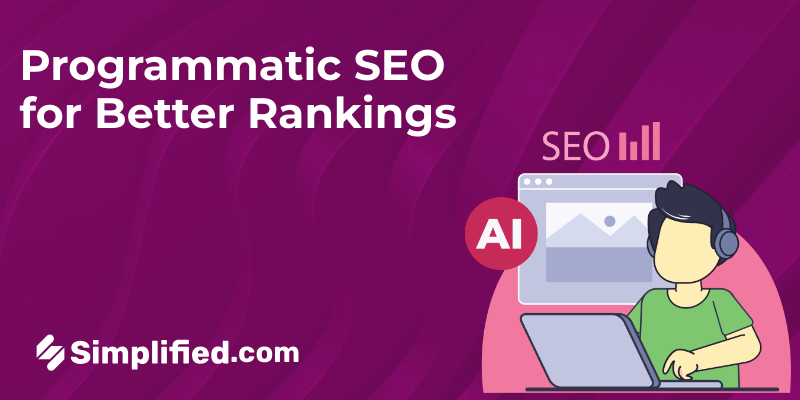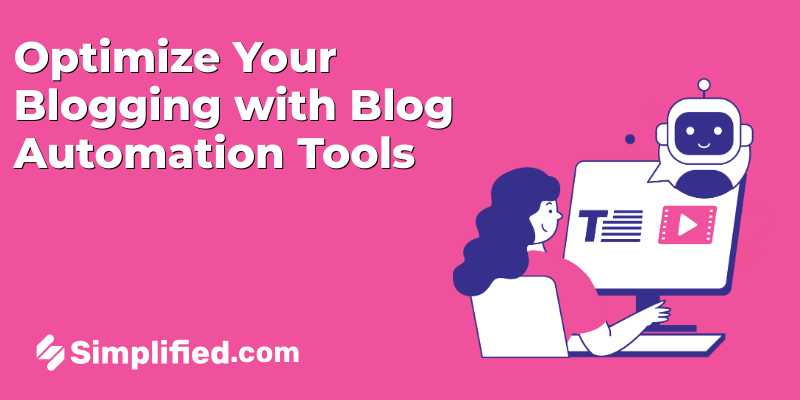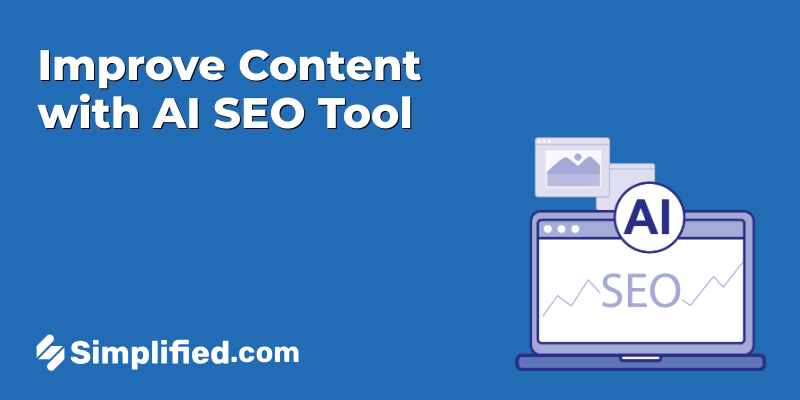Did you know you only get 150 characters to tell your story, grab attention, and convince someone to stick around on Instagram? That’s even shorter than a tweet — yet businesses that get it right see higher engagement and more clicks.
Your Instagram bio isn’t just a line under your profile picture — it’s your digital storefront, your elevator pitch, and your first impression rolled into one. Whether you’re a cozy café, a bold startup, or a personal brand, your bio should make people say: “I need to know more!”
In this guide, we’ll share creative, effective, and easy-to-use Instagram bio ideas to help your business stand out — and maybe even spark a few smiles. Let’s make those 150 characters count!
Why Your Instagram Bio Matters for Business

The Instagram Bio: Your Digital Business Card
Think of your Instagram bio as your digital business card. It’s often the first thing people see when they land on your profile, and it needs to quickly and clearly communicate who you are, what you do, and why they should care. It’s prime real estate to make a strong first impression and guide visitors further into your content or website.
First Impressions: Making a Lasting Mark
You know the saying, “You never get a second chance to make a first impression”? It’s especially true on Instagram. With countless profiles vying for attention, a well-crafted bio can be the difference between someone scrolling past and someone becoming a follower or customer. Make it count! Use clear, concise language and showcase your unique value proposition.
Setting the Stage: What a Great Bio Achieves
A great Instagram bio does more than just fill space; it actively works for your business. Here’s what it can achieve:
- Clarifies Your Brand Identity: It tells visitors exactly what your business is about.
- Attracts the Right Audience: By using relevant keywords, you can attract people who are genuinely interested in your niche.
- Drives Website Traffic: The single clickable link in your bio is a golden opportunity to direct people to your website, product pages, or latest blog post.
- Encourages Engagement: A compelling call to action can prompt visitors to follow you, sign up for your email list, or participate in a contest.
- Showcases Your Personality: Don’t be afraid to inject some personality into your bio! It helps you stand out and connect with your audience on a more personal level.
Bonus: 8 Creative Company Bio Examples That You Need To Use (Templates + Free tool inside)
Making Your Bio Clear, Catchy, and Professional

Clarity is Key: Defining Your Business in a Sentence
Think of your bio as your business’s handshake. It’s often the first impression you make, so you want to ensure it’s a good one. The most crucial element? Clarity. Can someone understand what your business does within seconds of reading your bio? If not, it’s time for a revision. Boil down your business to its core offering. What problem do you solve? Who do you solve it for? Answer these questions concisely.
For example, instead of a vague statement like “We offer innovative solutions,” try something direct: “We help small businesses manage their social media, so they can focus on growth.” See the difference? The second statement is specific, clear, and immediately tells the reader what you do and who you serve.
Crafting a Catchy Headline: Grabbing Attention
Your headline is prime real estate. It’s the first thing people see, and it determines whether they’ll read the rest of your bio. Don’t waste it on generic titles like “Founder” or “CEO.” Instead, use keywords that showcase your expertise and value proposition. Think about what makes you stand out. What are you known for?
Here are a few ideas:
- “Social Media Strategist for Startups”
- “Content Marketing Expert | Helping Businesses Grow”
- “Financial Advisor Specializing in Retirement Planning”
These headlines are much more attention-grabbing than a simple job title. They tell people what you do and hint at the benefits of working with you.
Maintaining Professionalism: Building Trust
While you want to be creative and engaging, it’s essential to maintain a level of professionalism in your bio. This is about building trust and credibility with your audience. Avoid slang, jargon, or overly casual language. Proofread carefully for any typos or grammatical errors. These mistakes can undermine your message and make you appear less competent.
It’s also a good idea to keep your bio focused on your business and its value. While personal anecdotes can be charming, they shouldn’t overshadow your professional message. Remember, your bio is a marketing tool, not a personal diary.
Striking the Right Tone: Avoiding the ‘Boring’ Trap
Professional doesn’t have to mean boring! You can still inject personality into your bio while maintaining a professional tone. Think about your brand’s voice. Are you playful and energetic? Serious and sophisticated? Let your brand’s personality shine through in your writing.
Use strong verbs and descriptive language to paint a picture of what you do. Share a brief success story or highlight a unique aspect of your business. The key is to find a balance between being informative and engaging. Don’t be afraid to show some passion and enthusiasm for what you do.
For instance, instead of saying “We provide excellent customer service,” try “We’re obsessed with providing exceptional customer service that leaves our clients smiling.” See how that adds a bit more flavor and personality?
Bonus: 600+ Best WhatsApp Bio Ideas to Give Your Profile a Fresh Vibe
Add Personality with Emojis (While Staying On-Brand)

Emojis can inject fun and personality into your business bios and content, but it’s important to use them wisely. Overdoing it or using the wrong emojis can dilute your brand’s message. Let’s explore how to add emojis strategically to connect with your audience without compromising your brand identity.
Emoji Dos and Don’ts for Business Bios
Think of emojis as spices – a little can add flavor, but too much can ruin the dish. When it comes to business bios, clarity and professionalism are key. Here’s a quick guide:
| Do | Don’t |
|---|---|
| ✅ Use emojis sparingly to highlight key points or add personality. A single relevant emoji is more impactful than a string of them. | ❌ Don’t replace words entirely with emojis — keep it readable and understandable. |
| ✅ Choose emojis that are relevant to your industry or brand values. (e.g., ✈️ for travel, ☕ for coffee shop) | ❌ Don’t use ambiguous, controversial, or potentially offensive emojis. |
| ✅ Test your bio on different devices to ensure emojis display properly, as they can look different across platforms. |
Match Emojis to Your Brand Voice
Your brand voice is how you communicate your brand’s personality. Emojis should complement that voice, not clash with it. Ask yourself:
- Is your brand playful and lighthearted? Then you might have more leeway with emojis.
- Is your brand serious and professional? Use emojis more sparingly and choose them carefully.
For example, a financial consulting firm might use a simple chart emoji 📊 to represent data, while a children’s clothing store could use a colorful balloon emoji 🎈.
Visual Communication: Using Emojis to Highlight Key Information
Emojis aren’t just for decoration; they can also be used to draw attention to important information. Think of them as visual cues.
- Bullet points: Replace traditional bullet points with relevant emojis for a more visually appealing list.
- Call to action: Use a pointing finger emoji 👉 to draw attention to a link or button.
- Announcements: Use a megaphone emoji 📣 to highlight important news or updates.
By using emojis strategically, you can guide your audience’s eye and make your content more scannable.
Examples of On-Brand Emoji Use
Let’s look at some examples of how different brands can use emojis effectively:
- A sustainable clothing brand: 🌿🌍♻️ (representing nature, the earth, and recycling)
- A fitness app: 💪🏃♀️🍎 (representing strength, running, and healthy eating)
- A marketing agency: 💡📈🚀 (representing ideas, growth, and success)
The key is to choose emojis that are authentic to your brand and resonate with your target audience. When in doubt, less is more. A well-placed emoji can add a touch of personality and visual interest, but the focus should always be on clear and compelling communication.
Smart Keyword Use for Discoverability

Identify Relevant Keywords for Your Niche
Think of keywords as the breadcrumbs that lead people to your profile. The more relevant they are, the better the chances of attracting the right audience. Start by brainstorming words and phrases that accurately describe your expertise, industry, and the services you offer. What problems do you solve? What makes you unique? These are great starting points.
Strategic Placement: Where to Include Keywords in Your Bio
Once you have your keywords, it’s time to put them to work. Your bio is prime real estate, so make sure every word counts. Here’s where to focus:
- Name Field: If it aligns with your brand, consider adding a relevant keyword after your name. For example, “Jane Doe – Marketing Consultant.”
- Bio Description: Naturally weave your keywords into your bio. Don’t stuff them in, but make sure they appear in a way that sounds authentic and informative.
- Skills Section: Most platforms have a dedicated skills section. Use this to list your core competencies and related keywords.
Keyword Research: Finding the Right Terms
Not sure which keywords to use? That’s where keyword research comes in. There are plenty of free and paid tools available to help you discover popular and relevant terms in your industry. Look for keywords with a good balance of search volume and low competition. These are the sweet spots that can drive traffic to your profile.
Balance Keywords with Readability
While keywords are important, readability is just as crucial. No one wants to read a bio that’s crammed with keywords and makes no sense. Aim for a natural, conversational tone that showcases your personality and expertise. Think of it as writing for humans first, and search engines second. Your profile should be engaging, informative, and easy to understand.
Bonus: 16 Creative Twitter Bio Ideas To Make You Stand Out From The Crowd
Craft a Call-to-Action That Converts
Define Your Goal
Before writing your CTA, decide what you want visitors to do — join your list, visit a page, buy a product? A focused goal ensures your CTA drives results instead of getting lost.
Use Action-Oriented Language
Choose strong, specific verbs that clearly tell users what to do. Instead of “Check my site,” say “Get Your Free Guide” or “Shop New Arrivals.”
✅ Be specific
✅ Show the benefit
✅ Add urgency if appropriate
Types of Calls-to-Action: Shop Now, Learn More, Visit Website
- Shop Now — for direct sales
- Learn More — to educate and build trust
- Visit Website — for general exploration
- Download Now — for free resources
- Join Our Community — to grow engagement
- Book a Call — for consultations or services
Test different CTAs to see what works best for your audience.
Make Your CTA Stand Out Visually
In a sea of text, your CTA needs to grab attention. Use visual cues to make it stand out. Here are a few ideas:
- Link Stickers: Instagram and other platforms offer link stickers for stories, which are highly visible and clickable.
- Emojis: Use relevant emojis to add visual interest and draw the eye to your CTA.
- Line Breaks: Separate your CTA from the rest of your bio with line breaks to create visual space.
- Capitalization: Use capitalization strategically to highlight key words in your CTA.
However, avoid overdoing it. Too many visual elements can be distracting and make your bio look cluttered. The goal is to guide the eye, not overwhelm it.
Promot Multiple Links with Bio Link Tools

The Limitation of One Link: Overcoming the Obstacle
Let’s face it: social media platforms typically give you just one precious link in your bio. That’s prime real estate! But how do you share all your important content – your website, blog, latest promotion, and other social profiles – with just that single link? It feels limiting, right? That’s where bio link tools come to the rescue. They allow you to create a landing page containing multiple links, turning that single bio link into a portal to all your awesome content.
Overview of Popular Bio Link Tools
There are many bio link tools available, each with its own set of features and pricing. Here are a few popular options:
- Linktree: One of the most well-known, offering a free plan and paid options with more customization.
- Bio.fm: Allows you to embed content directly onto your bio link page, not just links.
- Taplink: Focuses on mobile optimization and offers features for businesses like accepting payments.
- ContactInBio: Provides a range of templates and integrations, including options for lead generation.
- Lnk.Bio: Offers a simple, clean interface and affordable pricing, even for custom domains.
The best tool for you will depend on your specific needs and budget. Consider what features are most important to you, such as customization options, analytics, and integrations.
Customize Your Link Page for Brand Consistency
Your bio link page is an extension of your brand, so it’s important to keep it consistent with your overall look and feel. Most bio link tools allow you to customize the appearance of your page, including:
- Colors: Use your brand colors to create a cohesive experience.
- Fonts: Choose fonts that match your website and other marketing materials.
- Background: Add a background image or color that reflects your brand.
- Logo: Display your logo prominently to reinforce brand recognition.
- Button Styles: Customize the appearance of your buttons to make them stand out.
By taking the time to customize your link page, you can create a professional and memorable experience for your audience.
Track Link Performance: Measuring Your Success
One of the biggest advantages of using a bio link tool is the ability to track the performance of your links. Most tools provide analytics that show you:
- Click-through rates (CTR): See which links are getting the most clicks.
- Page views: Track how many people are visiting your bio link page.
- Referral sources: Find out where your traffic is coming from.
- Location data: Understand where your audience is located (depending on privacy settings).
By monitoring these metrics, you can gain valuable insights into what content is resonating with your audience and optimize your link page accordingly. For example, if you notice that a particular link isn’t getting many clicks, you might try changing the title or moving it higher up on the page.
Hashtags in Your Bio: Are They Right for Your Brand?

So, you’re thinking about adding hashtags to your Instagram bio? It’s a common question! Hashtags can be a great way to increase visibility, but it’s crucial to use them strategically. Let’s break down how to decide if they’re right for your brand.
Brand Hashtags vs. Industry Hashtags
First, understand the difference. Brand hashtags are unique to your company – think of a catchy phrase or slogan you want people to associate with you. Industry hashtags are more general, related to your niche or the content you create.
Brand Hashtags: These are fantastic for building a community. If you have a specific campaign hashtag, including it in your bio encourages users to share content using it. For example, a clothing brand might use #MyBrandStyle to get customers to post photos of themselves wearing their clothes.
Industry Hashtags: These can help new people discover you. If you’re a bakery in Austin, including #AustinBaker or #SupportLocalAustin might attract locals searching for those terms. However, these are less specific to your brand, so use them wisely.
Using Hashtags Sparingly: Avoiding Overcrowding
Your bio is prime real estate! Don’t stuff it with a laundry list of hashtags. A cluttered bio looks spammy and can be a turn-off. Choose one or two of your most important and relevant hashtags.
Think quality over quantity. It’s better to have one well-chosen brand hashtag and one relevant industry hashtag than a dozen that dilute your message.
Research Trending and Relevant Hashtags
Before you slap any old hashtag in your bio, do your homework! See what’s trending in your industry. Use Instagram’s search function to see how many posts are associated with different hashtags. Look at what your competitors are using (and how well it’s working for them).
Tools can also help you identify popular and relevant hashtags. Keep an eye on what’s working now – trends change quickly!
Monitor Hashtag Performance
Once you’ve added hashtags to your bio, don’t just forget about them. Track how they’re performing! Are people using your brand hashtag? Are you seeing an increase in profile visits or followers from the industry hashtags you’ve included?
Pay attention to the data and be prepared to adjust your strategy. If a hashtag isn’t working, swap it out for something else. It’s all about testing and refining to find what resonates with your audience and helps you grow.
Bonus: 6 Professional Bio Generators That Will Help You Stand Out
Instagram Bio Examples: Inspiration from Successful Businesses

Analyzing What Makes These Bios Work
Ever wonder what makes some Instagram bios so captivating? It’s not just luck! Successful bios are carefully crafted to communicate key information quickly and memorably. They often include a clear description of what the business does, their unique selling proposition (what makes them different), and a call to action (like visiting their website). The best bios also reflect the brand’s personality, whether it’s playful, professional, or somewhere in between. Let’s dive into some examples to see these principles in action.
Diverse Industry Examples: Finding Inspiration Across Niches
Looking at a range of industries can spark some great ideas for your own bio. Consider a local bakery, for example. Their bio might highlight their fresh, daily-baked goods and include a link to their online ordering system. On the other hand, a tech startup might focus on their innovative solutions and use a call to action that invites users to learn more about their platform. An artist might showcase their unique style and direct followers to their online gallery or upcoming exhibitions. The key is to adapt these concepts to your specific niche and target audience.
Key Takeaways: Applying Best Practices to Your Own Bio
Ready to create a bio that truly represents your brand? Here are some best practices to keep in mind:
- Clarity is key: Make sure your bio clearly states what you do and who you serve.
- Highlight your unique value: What makes you different from the competition?
- Include a call to action: What do you want people to do after reading your bio?
- Reflect your brand personality: Let your brand’s voice shine through.
- Use relevant keywords: Help people find you when they’re searching for businesses like yours.
- Regularly update: Keep your bio fresh and relevant to your current offerings and promotions.
By following these tips and drawing inspiration from successful businesses, you can craft an Instagram bio that not only looks great but also drives results.
Dos and Don’ts for an Amazing Instagram Bio
The Essential Dos: Best Practices to Follow
Think of your Instagram bio as your digital handshake. It’s often the first impression you make, so you want to make it count! Here’s what you should always aim to include:
- Clarity is key: Immediately communicate who you are and what you do. Avoid jargon and be straightforward. For example, instead of saying “Marketing Maven,” try “Marketing Consultant for Small Businesses.”
- Keywords matter: Incorporate relevant keywords that people might use when searching for a business or profile like yours. If you’re a baker in Brooklyn, make sure your bio says “Baker | Brooklyn” so locals can find you easily.
- A clear call to action: What do you want people to do after reading your bio? Visit your website? Sign up for your newsletter? Make it obvious with a direct command. “Shop our latest collection” or “Subscribe for weekly tips” are great examples.
- A trackable link: Make sure your link is working and directs users to the correct page. Consider using a link management tool to track clicks and optimize your landing page.
- Use line breaks and emojis: Make your bio easy to read. Line breaks separate information, and emojis add personality. But don’t overdo the emojis!
Common Pitfalls: Mistakes to Avoid
Just as important as knowing what to include is knowing what to avoid. Here are some common mistakes that can weaken your Instagram bio:
- Being too vague: A bio that says “Living life to the fullest” doesn’t tell anyone what you do or why they should follow you.
- Typos and grammatical errors: Always proofread! Nothing screams unprofessional like a bio riddled with mistakes.
- Ignoring your target audience: Write with your ideal follower in mind. What kind of language do they use? What are their interests?
- Not updating regularly: If you’re running a promotion or have a new product, update your bio to reflect that. Keep things fresh and relevant.
- Using too many hashtags: Your bio isn’t a place to stuff hashtags. Use them sparingly, if at all, and only if they’re highly relevant to your brand.
Maintain Brand Voice: Staying True to Your Identity
Your Instagram bio should be an extension of your brand. This means maintaining a consistent tone and style across all your online platforms. Here’s how to ensure your bio aligns with your brand voice:
- Reflect your brand values: What does your brand stand for? Make sure your bio communicates those values. If you’re an environmentally conscious company, mention your commitment to sustainability.
- Use consistent language: If your brand is playful and humorous, let that shine through in your bio. If it’s more serious and professional, maintain that tone.
- Consider your brand aesthetic: Your bio should complement your overall Instagram aesthetic. Use emojis and formatting that align with your visual style.
Keeping it Current: Regularly Reviewing Your Bio
Your Instagram bio isn’t a “set it and forget it” kind of thing. It’s important to review and update it regularly to keep it relevant and effective. Here’s why and how:
- Promotions and announcements: Use your bio to promote current offers, new products, or upcoming events.
- Seasonal updates: Change your bio to reflect the current season or holiday. This shows that your account is active and engaged.
- Performance analysis: Track the clicks on your bio link and analyze what’s working and what’s not. Adjust your call to action or landing page accordingly.
- Keep it fresh: Even if nothing major has changed, updating your bio every few months can give your profile a fresh look and encourage new followers.
Testing and Tweaking: Keeping Your Bio Fresh
Think of your Instagram bio as a living document, not a static billboard. It’s prime real estate that deserves ongoing attention. Here’s how to keep it fresh and working hard for you.
A/B Testing Different Bio Elements
Ever wonder if a different call to action or a slightly reworded description would perform better? That’s where A/B testing comes in. It’s like running mini-experiments on your bio. Try swapping out different elements – your profile picture, your tagline, your call to action – and see which version resonates most with your audience. For example, you could test two different versions of your bio, one focusing on your expertise and another highlighting your personality. Keep the one that gets you more profile visits or click-throughs.
Tracking Analytics: Measuring the Impact of Changes
You can’t improve what you don’t measure. Instagram’s built-in analytics are your friend here. Pay attention to metrics like profile visits, website clicks, and follower growth. These numbers tell you whether your bio changes are actually making a difference. If you notice a dip in engagement after a change, it might be time to revert or try something new. It’s all about understanding what resonates with your specific audience.
Staying Up-to-Date with Instagram Trends
Instagram is constantly evolving, and so should your bio. Keep an eye on the latest trends, features, and hashtags. Are there new ways to express yourself or connect with your audience? For example, if a new type of content is trending, you might want to mention your expertise in that area. Or, if a relevant hashtag is gaining popularity, consider incorporating it into your bio to increase visibility. Staying current shows that you’re active and engaged with the platform.
Iterative Improvement: Continuously Optimizing Your Bio
Optimization is not a one-time task; it’s an ongoing process. Regularly review your bio, analyze your results, and make small tweaks based on what you learn. Think of it as a cycle of testing, measuring, and refining. The goal is to continuously improve your bio’s performance and ensure it accurately reflects who you are and what you offer. Even small changes can add up over time, leading to significant improvements in your overall Instagram presence.

























